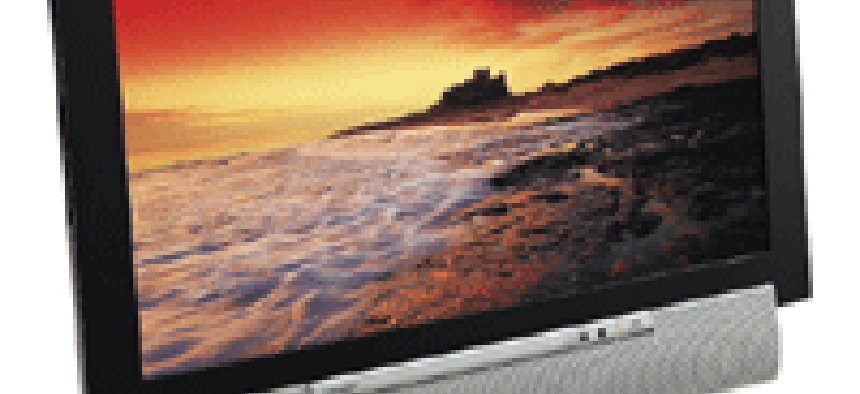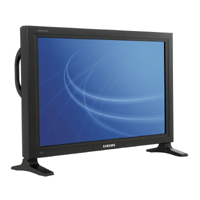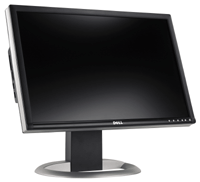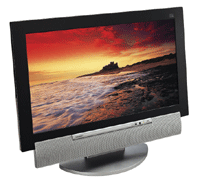In the not-too-distant future, you might have an easier time finding buggy whips'supposedly made obsolete by the arrival of the horseless carriage'than obtaining a large-screen CRT monitor. The liquid-crystal display, or LCD, has arrived and pretty much taken over nowadays.Just about every manufacturer of large CRTs is planning to sunset the large, glassy behemoths. No one seems to want picture tubes any more. They're bulky and drain energy, and you might trigger an Occupational Safety and Health Administration probe if you asked people to move them around an office.By contrast, the super-sharp LCDs are relatively lightweight, easy to move and often so thin they can be mounted on a wall. They consume less energy as well. The multimedia features found on larger LCD displays (for our purposes, 20-inch diagonal and greater sizes) far outshine whatever came with CRTs: Built-in speakers are often available, for example, as are TV tuners.'For the form-factor savings, the power savings, the overall look and feel, the LCD provides a better fit than the CRT,' said David Nichols, director of display marketing for Samsung Electronics America Inc., which has had a presence in both the LCD and CRT camps. He adds that because the large LCDs are be easier to work with, the devices are finding a place on more desks, in turn leading to more uses.'Having the larger displays provides that extra functionality,' he said. 'More and more people are getting into the graphics area, even into basic PowerPoint. It's great to have your tool set as well as the document available, and that's what these displays do.'In many offices, Nichols said, people are putting two larger LCDs side by side, making good use of the enhanced real estate.All this is well and good'and much of it could be considered old hat to those who have experienced an LCD versus a CRT. What, then, constitutes a 'bargain' in larger LCDs?The answer will likely be highly subjective: If there's a strong brand preference, for example, or if the agency head really needs a TV tuner built into the monitor, then a device that may seem more expensive to some users will be that elusive bargain item for others.On the other hand, some definite trends, including decreasing prices and increasing capabilities, are making it possible to determine that an item has, indeed, achieved bargain status.Prices haven't fallen as quickly for some manufacturers as they have for others. One firm's 20-inch LCD fell by only $20 in the course of 12 months, compared to a $200 drop over the same period for Apple Computer Inc.'s 20-inch LCD.[IMGCAP(2)]One key bargain factor is the increase in contrast ratios'the intensity of black-on-white images'in LCDs in relation to price. Where in the past a 400:1 ratio was often acceptable, buyers are now offered 500:1, 600:1, 700:1 and, in one instance, 1,000:1 ratios at very good prices.The lower 400:1 ratio is still present in the Apple Cinema displays, which are a good value due to their overall quality, dropping prices, and the addition of Universal Serial Bus and FireWire ports.Nichols said that a higher contrast ratio yields a 'more crisp image, with no bleeding. It gives you a more life-like viewing image.' He added that high contrast is also important in text displays.A lot of this technical migration is coming from the convergence of LCD multimedia devices, including LCD TVs, with the pure monitor side of the LCD business, said Sweta Dash, director of LCD and projection research at iSupply Corp. of El Segundo, Calif., a research company specializing in digital-imaging technologies.Rapid image-response times'as fast as 8 or 10 milliseconds'are important for television viewers who don't want blurry sports images. But they are also useful if you're animating a PowerPoint presentation or doing video editing for the Web.'We will be seeing more technology transfer from one side [of the market] to the other,' Dash said. At the same time, she believes the sweet spot for desktop LCDs is in the 17-inch and 19-inch categories, with the latter poised for growth. 'For the next eight quarters, we see the 20-inch and above market gaining market share, but at less than 5 percent. We still see it as a high-end market.'The TV and multimedia capabilities in large LCDs may find a place in government as well as the consumer market, Samsung's Nichols said.[IMGCAP(3)]'It depends on where the display is going to be used,' he explained. 'There are certain applications in the educational area where the built-in TV tuner becomes very important,' such as agency or military classroom training.He added, 'By building in the TV tuner, you get speed capability, component video and S-Video, and the computer input. Having all of those available gives you flexibility in the type of content you are trying to handle. That can be very important for many of the larger government agencies.'As for the future, look for an emphasis on higher color quality in large LCDs.'You'll see companies like Samsung focusing on giving you even more true, full colors than you have on today's LCD,' Nichols said. 'The more we can do in that area, the more it benefits everybody.'Also, look for more in the way of wide-screen adaptations, a format that offers new ways of laying out information, he added.iSupply's Dash also noted a growth of wide-screen SXGA units at the 20-inch level, mostly as a consumer product. These can be second or third televisions in a home, while perhaps becoming adjunct PC monitors.Dash said the prevalence of 19-inch LCDs could spell trouble for 20-inch models. Industry prefers a two-inch or greater gap between models, making 21-inch and certainly 23-inch and above more appealing than 20-inch displays, she said.And while industry experts won't explicitly predict it, it seems safe to say that LCDs will accelerate the end of CRTs at all but the most basic of sizes and applications.
Samsung's SyncMaster 323T 32-inch LCD is priced at $2,220. It has a Picture-in Picture feature.
Dell's 24-inch UltraSharp 2405FPW monitor features a 1,000:1 contrast ratio and is priced at $1,199.
The IT-23M1U multimedia LCD monitor from Sharp Systems of America offers high-definition video and sells for $1,199.









